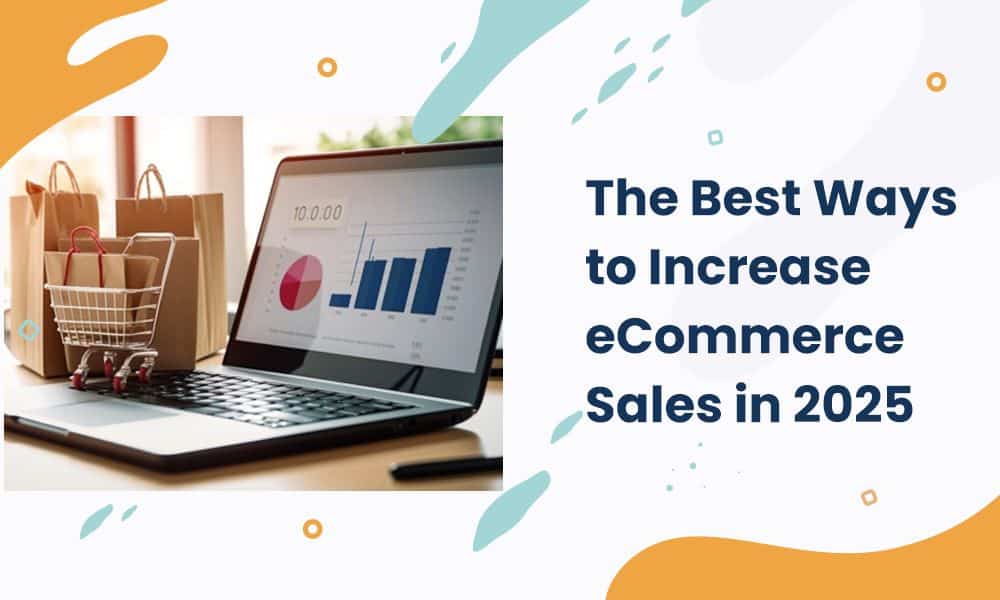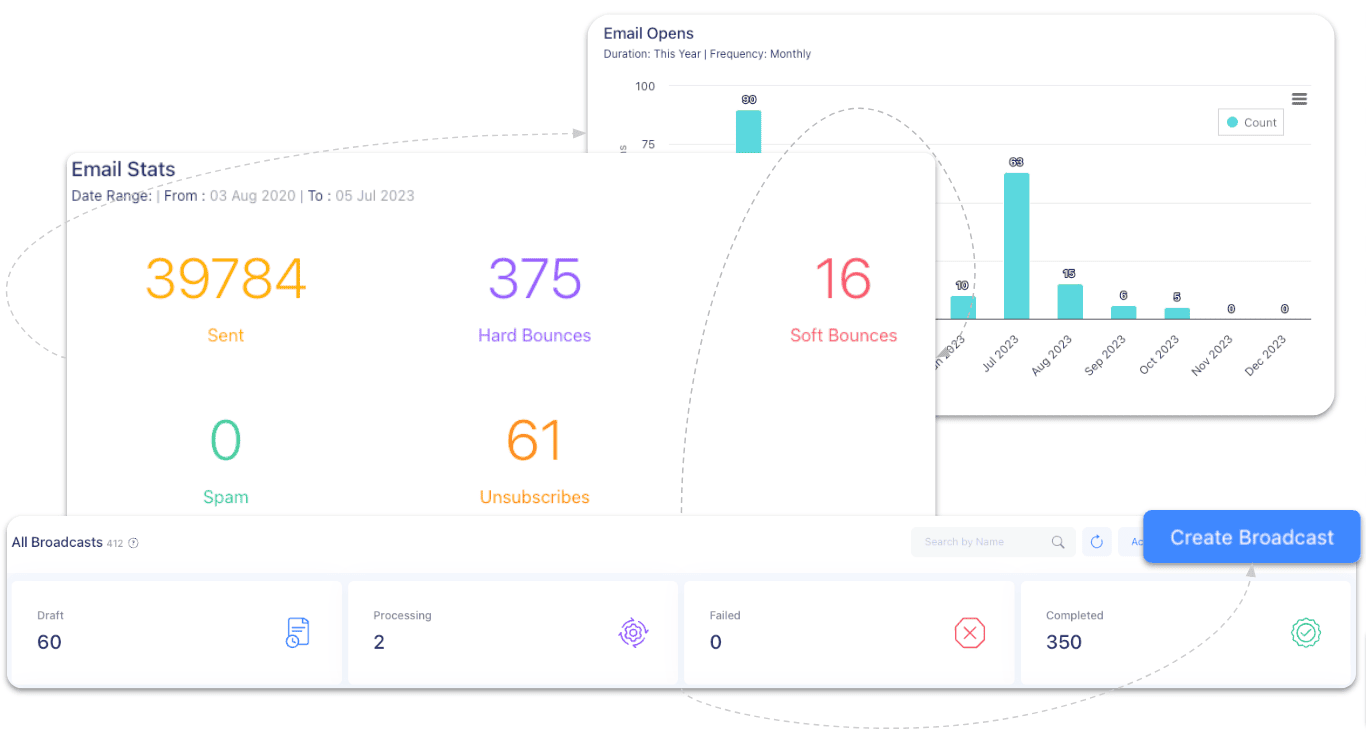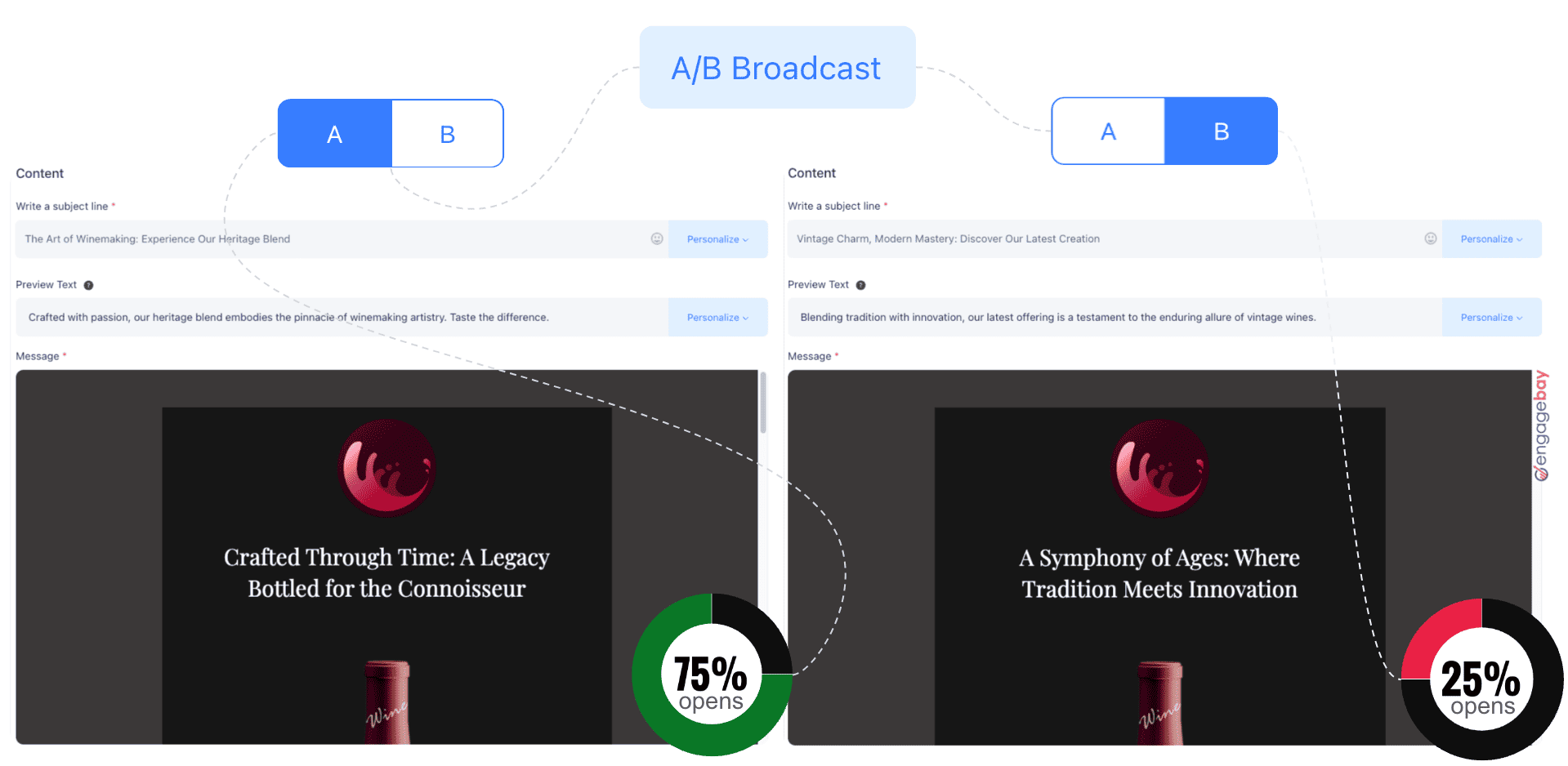Taking your business online is a strategic move, but are your sales numbers where they should be?
If you’re lagging, diving deeper into the digital space is important. eCommerce represents a goldmine of opportunity, especially for those eager to boost their sales figures.
In the fourth quarter of 2023, US eCommerce sales hit a staggering $285.2 billion—the highest ever recorded in a single quarter. The digital marketplace, particularly for online stores, is bursting with potential. But how do you tap into this vast well of opportunity? More importantly, how do you increase eCommerce sales effectively?
Boosting eCommerce sales is not as simple as launching a website and waiting for orders to roll in. It requires a meticulous blend of research, a robust platform, and smart marketing strategies. Numerous factors influence the success of your online sales initiatives.
In this blog post, we’ll explore the best ways to increase eCommerce sales, from strategies and methods to the most effective SEO techniques for your business.
Let’s dive in!
Table of Contents
Understanding Your Target Audience
Regardless of the processes you employ—whether traditional, digital, or hybrid—choosing the right marketing strategy hinges on accurately identifying your target demographic.
A target market is a specific group of consumers a company aims to reach and engage for sales.
Understanding who they are, what they need, and how they behave is crucial to tailoring your approach and maximizing your marketing efforts.
Understanding the demography of your target audience
Each demographic division assists you in identifying your target audience and developing the best plan for communicating with them and convincing them to buy your product or service.
- Age: Your brand messaging may differ depending on the age group of your target audience. That’s why it’s essential to distinguish the peculiarities of children, teenagers, and adults, or they can be named differently.
- Gender: Gender differences may affect aspects of communication such as the tone, images, participants, materials, and the general approach of the marketing. This is where you need to work with your team to have a particular target market segment where each service or product can be sold to the specific gender that endures them to buy the particular service or product.
- Location: Location is a critical aspect of advertising. Considering the diverse countries or the requirements of current weather, selling summer clothes to consumers in cold areas will not work as a proper strategy.
- Language: To target your demographic, the primary advertisement strategy should use language that will appeal to your target market.
- Financial targeting: Consider your customer’s ability to afford the price level you will be setting. Promoting costly products to the poor target group is useless since they require guidance on purchasing substitutes for such products. This means that offering substandard products and services to rich people will not affect their awareness.
To boost interest in your offerings, integrate the factors mentioned above and begin targeting your audience through advertising campaigns on the channels they frequent most.
The next crucial step is gathering customer data, enabling you to analyze what strategies resonate with different segments and their effectiveness.
This data-driven approach allows for more precise and impactful marketing efforts.
Techniques for gathering customer data and analytics
In today’s interconnected digital landscape, businesses have many tools and techniques to gather comprehensive customer data and analytics. Here’s a closer look at some of the most effective methods:
Website analytics
Tools like Google Analytics provide valuable insights into user behavior, preferences, and interactions with your website.
You can better understand how visitors engage with your site by analyzing website metrics such as traffic, page views, visit frequency, and conversion rates.
Additionally, audience targeting and goal setup features allow you to define key web pages, optimize user journeys, and focus on the marketing strategies that deliver the best results.
Social media insights
Marketing communication tools like social networks offer information on your audience and their interests.
By tapping into social media insights, you can track likes, shares, comments, impressions, and other metrics to gauge content performance effectively.
Demographic and audience data allow you to segment your followers into target groups, enabling more precise messaging and advertising.
Staying informed about these metrics helps you refine your messaging, craft more effective ads, and build stronger connections with your audience, ultimately driving better engagement and brand attention.
Surveys and feedback
Direct feedback is a powerful tool for understanding your audience more deeply. You gain valuable qualitative insights into their needs, preferences, and concerns by utilizing surveys, feedback forms, and customer reviews.
These tools allow you to connect with customers, gather feedback on specific features, assess satisfaction levels, and understand their perception of your brand.
When you actively listen and respond to customer feedback, you enhance customer satisfaction and drive business growth.
Additionally, this feedback can be instrumental in identifying opportunities for upselling and cross-selling, allowing you to tailor your offerings to meet customer needs more effectively.
Customer relationship management (CRM) systems
CRM software is a powerful tool that helps businesses manage and organize customer relationships and interactions.
CRM systems offer a comprehensive view of each customer’s journey by centralizing customer data, such as email exchanges, phone calls, and purchase history.
This holistic perspective allows you to personalize communication, tailor exclusive promotions, and meet customers’ needs more effectively. CRM features like lead scoring and pipeline management enable you to qualify leads and manage business relationships more efficiently.
With a CRM system, you can strategically guide the customer journey, fostering steady sales growth.
Heatmaps and click tracking
Heatmaps and click-tracking tools provide valuable insights into user behavior on your website, highlighting areas of interest, engagement, and potential concerns.
By analyzing heatmaps, scroll maps, and click data, you can identify user activity trends that inform strategic website structure and design improvements, ultimately enhancing usability.
These tools allow you to make data-driven decisions that boost website usability, optimize conversion rates, and support overall business growth.
Email marketing analytics
Email marketing platforms provide essential insights into the performance of your campaigns by tracking key metrics such as open rates, click-through rates, and conversion rates.
These metrics allow you to gauge the effectiveness of your emails, from subject lines to calls to action, helping you refine your strategy for better results.
A/B testing to increase eCommerce sales
A/B testing empowers marketers to optimize email performance by testing different versions and making data-driven adjustments.
Understanding email marketing metrics allows you to refine your messaging and better segment your audience, ensuring they receive content that truly resonates with them.
Once you have detailed customer data, it’s crucial to act on it. From the moment a customer engages with your brand, whether online or offline, you should strive to meet their needs at every touchpoint.
Personalization is key—through tailored product recommendations, a seamless checkout process, or prompt customer support.
For example, through A/B testing, VWO helped Yuppiechef improve its conversion rates by masking the homepage navigation bar, doubling sign-ups from 3% to 6%. This highlights how a thoughtful, data-informed approach can significantly impact customer interactions and drive sales.
Customers who feel understood and valued are more likely to engage with your brand, leading to increased sales and loyalty.
Read also: A Complete eCommerce SEO Guide for Beginners
Website Optimization Strategies to Increase eCommerce Sales
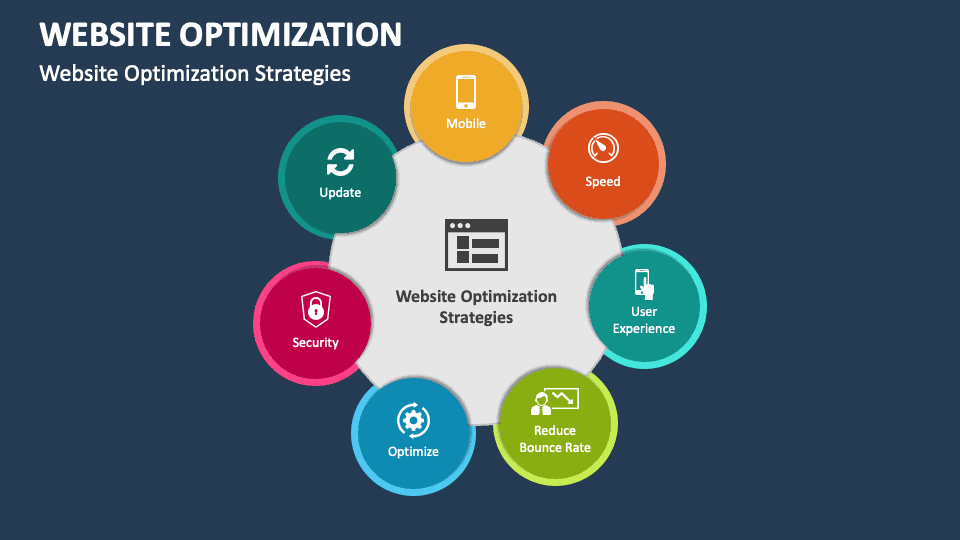
First impressions are crucial in online marketing, just as in interviews. Research shows that a website has only 50 milliseconds to make a positive impression; otherwise, visitors will likely leave immediately.
To capture and retain your audience, your website needs to be exceptional, focusing on delivering a superior user experience (UX). The goal is to cater to your visitors’ needs with a fully functional website and intuitive navigation.
Key factors that influence your website’s bounce rate include page loading speed, ease of navigation, the quality of content, and the effectiveness of landing pages.
Additionally, incorporating detailed FAQs and automated chatbots for customer service can significantly enhance the user experience, encouraging visitors to stay longer and engage more deeply with your site.
Offer clear navigation
Effective navigation is key to a great user experience on a website. When users can easily find their way around, they’re more likely to stay longer and explore more than they initially planned.
Keep navigation intuitive and straightforward, with essential features prominently displayed in the menu, using clear labels and readable fonts. Your website’s main offerings should be easy to locate, ensuring visitors can quickly access what they need without frustration.
This seamless experience keeps users engaged and encourages them to spend more time on your site.
Make your eCommerce site responsive
A whopping 74% of visitors are likely to return to your site if it offers a good mobile user experience. With most of your customers browsing online on their phones, your website must be optimized for mobile viewing.
If not, you’re missing out on a significant portion of potential users who could be engaging with your content and making purchases. Ensure your site is mobile-friendly to capture and retain this vital audience segment.
Improve site loading speed
No one likes to wait, especially online. If your website is slow, users won’t stick around—they’ll quickly move on to faster alternatives.
To ensure your site loads quickly, optimize image sizes, enable browser caching, and consider using a content delivery network (CDN). A fast-loading website keeps visitors engaged and gives you an edge over competitors who haven’t optimized their pages.
Add a clear call-to-action (CTA)
Make sure your call to action (CTA) is eye-catching and clear.
Users should instantly know what steps to take when they’re on your site. If you’re selling a product or service, ensure your CTA is bold and attention-grabbing, guiding users toward the desired action without hesitation.
Make your website more accessible
Making your website accessible to all users, including those with disabilities, is crucial. JobNimbus, for example, saw its app ratings soar from 2.5 to 4.8 after redesigning its app with accessibility in mind, using insights from UXCam data.
To achieve similar results, ensure proper HTML markup, provide alternative text for images, and use high-contrast colors to improve readability for visually impaired users.
Add high-quality product images and descriptions
Ensure your products are showcased with high-quality images and detailed descriptions to enhance the online shopping experience.
Clear, unobstructed visuals paired with relevant, easy-to-understand descriptions allow customers to make informed decisions. This attention to detail attracts new customers and helps retain loyal ones by offering them an exceptional shopping experience.
Maintain consistent branding
Maintaining consistency in colors, fonts, and images across your website strengthens your brand identity and builds trust with visitors.
Like any other aspect of branding, a cohesive visual experience ensures that your website feels professional and reliable, making it easier for users to connect with your brand.
Optimize for SEO
Proper website formats, including meta tags, meaningful URLs, and high-quality content, are crucial for optimizing your site’s performance.
Ensure your content is rich in relevant keywords to improve search engine rankings, visibility, and user engagement, ultimately driving more sales.
Effective link building also plays a key role in SEO. Gaining backlinks from trusted websites increases your site’s authority and helps it rank higher. Choosing a reliable link building agency to work with can make this process more efficient, ensuring you get quality links that strengthen your online presence.
Implement high-quality forms
If your online store includes forms for capturing user information or executing transactions, ensure they are easy to fill out and optimized for mobile devices.
Simplify the forms by reducing the number of input fields and providing clear instructions for each step, making the process seamless for users.
Read also: eCommerce Email Marketing Simplified — 15 Examples + Tips
Conversion Rate Optimization (CRO) Explained
Conversion Rate Optimization (CRO) involves enhancing your website or application to improve conversion rates through purchases, newsletter subscriptions, or form submissions.
By analyzing user behavior, identifying process flaws, and implementing improvements, CRO helps you maximize the ROI of your digital marketing efforts and boost sales.
Despite its importance, 68% of SMBs haven’t yet embraced CRO, missing out on its potential to set them apart from competitors.
Importance of conversion rate optimization to increase eCommerce sales
- Maximizing ROI: It increases the chances of getting leads, sales, or any other call-to-action from existing traffic, improving the overall ROI of marketing endeavors.
- Improving user experience: CRO, for its part, is about improving communication by making it easier for website visitors to take some form of action on your website. Not only does this enhance the number of chances for converting clients, but it also creates a positive outlook on the brand from the consumer’s end. A mobile-friendly company captures business from 67% of users; hence, being mobile-responsive is beneficial.
- Data-driven decision making: CRO analyzes figures and performs experiments to enhance conversion. Since your decision will be based on the performance data, you will deliver quality service and improve user experience.
Techniques to improve CRO
- A/B testing: A/B testing requires comparing the performance of a webpage or any element in terms of conversion between version A and version B. By running studies, you can spot the variant that raises conversion rates depending on the design, copy, or layout differences.
- Checkout process simplification: A simple approach that may increase conversion is to work with the checkout process by decreasing its structural complexity. That is, limiting the number of steps in the checkout, removing unnecessary fields that may seem obligatory to fill in customers, and providing guest checkout options.
- Call-to-action optimization: The design, positioning, and text of the CTAs have strongly influenced the conversion rate. Test various messages, button colors and sizes, and wordings to identify the best CTAs that appeal to followers.
Success story: Increasing conversions at DashThis
DashThis, a marketing reporting tool, faced challenges while converting free trial users into paid subscribers.
They achieved remarkable results by focusing on necessary changes and addressing user queries. Leveraging Hotjar Insights, they enhanced usability, discovered new feature opportunities, and boosted customer satisfaction by 140%.
The outcome?
Their conversion rate soared to 50% in just ten months.
Read also: 19 eCommerce Best Practices to Win Customer Confidence in 2025
Marketing and Promotion Techniques to Increase eCommerce Sales
If you aim to boost progress on your eCommerce website, there are two primary approaches: organic and paid.
For organic growth, focus on strategies like email marketing, search engine optimization (SEO), and social media marketing. These methods help build a lasting online presence without direct costs.
On the other hand, the paid route offers quicker results through tactics like Google Ads, influencer partnerships, and affiliate marketing, helping you reach your target audience more rapidly.
Let’s go into details.
Email marketing strategies
Emails are the ultimate way to keep in touch with your customers. Here, you can increase your customer retention and, at the same time, enhance engagement. Here are some key strategies to employ:
- Segmentation: Subdivide your email list according to interests, past purchases, present behavior, and age. This enables you to send messages that are better suited to a specific segment than a blanket message.
- Automated workflows: Use the sequence of emails, including welcome emails, abandoned cart emails, and purchase follow-up emails, to engage leads and encourage the customers to finalize the purchasing process.
- Promotional campaigns: Employ email marketing to present subscribers with discounts, special offers, or membership rewards. Features such as anniversary coupons, visitor promotions, and other offers should be used to make customers buy more, thereby increasing eCommerce sales.
Influencer and affiliate marketing tactics
Influencer and affiliate marketing can assist eCommerce store owners in tapping new clients and increasing brand visibility. However, the statistic that seems to convey defectors’ sentiments best is this: 88% of consumers have been persuaded by an influencer to purchase a product. Here’s how to leverage these strategies effectively:
- Identify relevant influencers: Work with influencers with loyal audiences who are like-minded with your business venture. Join partnered content, products, and promotions to increase reach.
- Implement affiliate programs: Solicit affiliate marketers to sell your merchandise or services in return for a share of the profits. Make it easy for your affiliates to market your products by giving them advertising samples, links, and enticements to try out products on their own.
Influencer and affiliate marketing can also help attract prospective customers by establishing credibility and boosting sales through organic traffic and targeted promotions.
Utilizing discounts, promotions, and loyalty programs effectively
Promotions, discounts, and loyalty effectively motivate customers and increase eCommerce sales. Here’s how to leverage them:
- Strategic discounting denotes that special offers and other sales incentives should be used correctly to influence consumers’ buying decisions. Practice with various discounts: percentage off, dollars off, and BOGO are just a few to consider when determining what works best for your audience.
- Loyalty programs entitle customers to return to the company to be constantly served. To increase item orders and loyalty, provide incentives such as discounts, first access to sales, and points for repurchases.
Social media platforms can promote these discounts, promotions, and loyalty programs, helping target the right audience, increase brand awareness, and drive traffic and sales.
Read also: A Complete eCommerce SEO Guide for Beginners
Search Engine Optimization (SEO) Explained
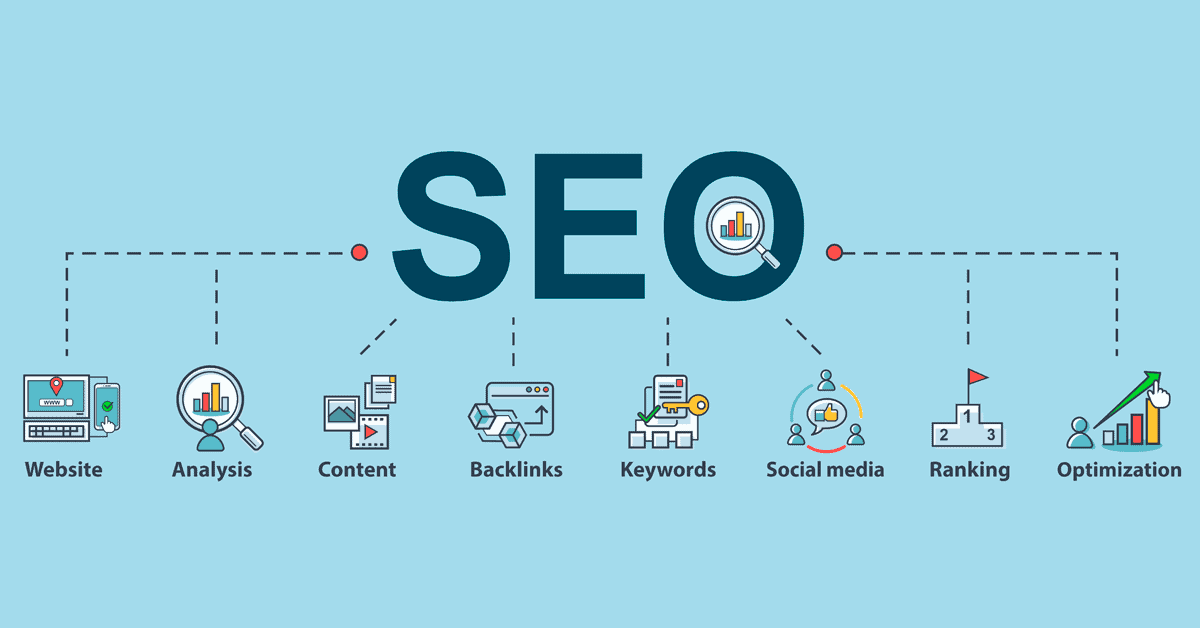
SEO is the backbone of every eCommerce store because it drives organic traffic, boosts conversion rates, and enhances a site’s visibility on search engine results pages (SERPs).
To stay relevant, your store must strategically target the keywords that potential customers use when searching for products online, ensuring your offerings are easily discoverable.
Impact of SEO in increasing eCommerce sales
Through the above analysis, it is clear that SEO plays a major role in determining the visibility of the eCommerce platform on the SERPs. Hence, potential customers will have easy access to the same. Here’s how SEO can help boost eCommerce sales:
- Increased visibility: Optimize your eCommerce website for specific keywords and customer queries. This will increase the website’s search engine ranking, leading to exposure among buyers.
- Targeted traffic: The most appropriate quality of SEO is that it delivers traffic spontaneously to an eCommerce store. SEO targets people searching for a particular type of product/service that the store offers. This traffic will likely turn into buyers once they find what they want.
- Enhanced credibility: This authority translates to value and credibility for your eCommerce platform. This improves the perception of the general customer towards products displayed and increases the chances of a sale.
- Long-term growth: SEO is far more stable, unlike paid ads, which provide temporary relief to eCommerce businesses and their stores. This way, you can consistently work on optimizing your site, maintaining and improving rankings in the long run, and always having a stream of traffic and sales.
Keyword research and on-page SEO best practices
Keyword research and on-page SEO optimization are pivotal for an effective SEO strategy in eCommerce. Here’s how to approach them:
- Keyword research: Ensure that you do extensive keyword research to help you determine the keywords or phrases your target customers were probably searching for. Using tools like Semrush or Google Keyword Planner, you can find keywords that will bring in a lot of traffic and do not have many competitors, thus specifying your optimization direction.
- On-page optimization: Specifically, target keywords must be integrated into elements on a website’s page, like title tags, meta descriptions, headings, and content. Product pages should be well-organized, loaded with all necessary data, and contain stimulating CTAs.
Building backlinks and improving domain authority
Backlinks and domain authority significantly impact your site’s position in search engines. Here’s how to fortify domain authority through backlink building:
- Content marketing: Invest in creating powerful, helpful content in the form of blogs, guides, and other reviews that would be useful for your specified audience. Use e-mail advertising, other blogs, and social networks to request a link to this content from other websites with higher rankings.
- Link building: Get backlinks from relevant and credible sites in your field to boost the site’s reputation. Gather as many partnerships with influencers, bloggers, and other experts in your sphere as possible and receive their backlinks and site credibility.
- Internal linking: Use internal linking to create relations between your website’s pages to assist the search engine in discovering and crawling your pages. Connect relevant product pages, categories, and blog articles for better site guidance for visitors.
Success story: An 861% surge in organic traffic
Citron Hennessey noticed they were losing to competitors when potential clients searched for local firms.
To address this, they revamped their SEO strategy with the help of Victorious, a newly acquired website. The result was a staggering 861% increase in monthly traffic.
With optimized content and strategic keyword usage, Citron Hennessey is now on a path to sustainable growth, securing a healthier business journey.
Read also: 25 Top eCommerce Marketing Tools Sure to Boost Sales in 2025
How to Streamline the Checkout Process
A smooth checkout experience is crucial for driving sales and fostering customer satisfaction. Here’s why it matters:
- Reduced cart abandonment: A well-constructed checkout process will reduce the time it takes for the user to change their mind about completing the transaction. Hence, cart abandonment will be reduced.
- Enhanced user experience: A fewer-step checkout process lets the customer know you value ease of use.
- Increased conversion rates: Last but not least, your conversion rates will go up with a smooth checkout experience. If you’re selling a smooth experience with your products and services, customers will likely attach your products in the same positive light.
Common checkout barriers and how to remove them
- Complicated forms: Cumbersome or long checkout forms can be off-putting to customers, who may abandon their shopping cart. To reduce the time taken in data entry, minimize form fields, reduce the amount of information to be collected, and use auto-completion.
- Hidden costs: If the cost is more than the product’s standard price, the user will hesitate. Hidden costs like shipping charges, lengthy taxes, platform fees, etc., can deter the user from completing the purchase.
- Limited payment options: Accepting many forms of payments ensures that customers are served to their needs and that the process is easier. Whenever payment methods are considered, one should integrate credit/debit cards, PayPal, Apple Pay, and digital wallet options for consumers.
Payment options and security measures
- Secure payment gateways: Security should be paramount in the list by incorporating credible payment processors that meet standard security measures and compliance. As much as possible, showcase security badges and SSL certificates to customers with the end view of making them safe and secure for payment.
- One-click checkout: Add an automatic one-click checkout feature for the payment methods so that repeat customers can make payments quicker. Storing the client payment and shipping information securely means that subsequent purchases can be made easily without much effort, encouraging the same.
- Guest checkout option: Ensure that your website offers customers the option to shop as guests if they do not wish to open an account. Eliminate the need for the visitors to be required to create an account to make a purchase, and reduce the steps to a minimum to maximize the chances of a sale to be made.
Read also: How To Engage With Customers After The eCommerce Checkout
Customer Service Excellence
Customer service is essential as it lays the foundation for fostering customer loyalty and encouraging repeat purchases.
In today’s competitive market, customer satisfaction is the cornerstone of a successful business.
Remarkably, 81% of consumers are more likely to repurchase after a positive experience, and 86% are willing to spend more for exceptional customer service. This highlights the significant impact that outstanding customer support can have on a business’s growth and success.
Integrating live chat support and AI chatbots
- Live chat support: Live chat support solves many customer problems before they can escalate. Customers can ask chat support for their doubts about the product and get help instantly.
- AI chatbots: Take it a step higher. Shift to using AI chatbots that leverage machine learning to engage in a human-like manner with users.
Managing and leveraging customer feedback
- Collecting feedback: Encourage customers to complete customer satisfaction surveys, feedback forms, and follow-up telephone calls. Collect information on what customers like and dislike regarding the product and service offers. As well as possible recommendations for changing the strategies utilized to serve customers.
- Responding promptly: Ensure a good show of customer relations by promptly addressing client issues. Accept feedback, thank customers for their feedback, and try to provide solutions to their problems.
- Implementing feedback loops: Form some channels to ensure that the loops are closed with the customers and that you are responding to their concerns. Share notifications, additions, or advancements concerning your customers’ feedback. Both in terms of your responsiveness and your commitment to your customers.
Conclusion
The above strategies offer immense potential to boost eCommerce sales for small businesses. Now is the time for business owners to take action and implement these proven methods.
Businesses can drive growth and elevate customer satisfaction by leveraging big data, enhancing website usability, and embracing cutting-edge SEO and social proof techniques. Continuous optimization of these strategies is key to staying ahead in the highly competitive digital landscape, ensuring long-term success and a powerful online presence.
Seize these opportunities to transform your eCommerce platform and watch your sales soar.
EngageBay is an all-in-one marketing, sales, and customer support software for small businesses, startups, and solopreneurs. You get email marketing, marketing automation, landing page and email templates, segmentation and personalization, sales pipelines, live chat, and more.
Sign up for free with EngageBay or book a demo with our experts.
Frequently Asked Questions (FAQ)
1. What are the quickest changes I can make to increase eCommerce sales?
Ensure the site has a fast loading speed, enhance product descriptions, and launch special offers for immediate sales.
2. How do I know which sales strategies are working?
They must monitor and record the conventional rates, the source of visitors, and customer responses to evaluate the performance of the sales techniques.
3. Can SEO impact my eCommerce sales?
Yes, SEO plays a large role in increasing the sales of products and services since it improves a website’s visibility. Thereby attracting the right traffic and helping the company create better customer relations with possible buyers.
4. What is the best way to use social proof to increase sales?
People prefer buying from or investing in firms whose websites have ratings, recommendations, and references from other users.
5. How often should I be updating my eCommerce site for optimization?
Make a goal to maintain a frequency of its updates due to competition with other sites. As well as continuous additions of new products, new content, and optimizations in eCommerce.
6. What are the best practices for mobile optimization in eCommerce?
Prioritize responsive design, minimize loading times, and simplify navigation to ensure a seamless mobile user experience and maximize conversion rates.
7. How do upselling and cross-selling differ in implementation?
The essentials of mobile usability are a good response to different resolutions, fast loading, and easy site navigation to boost the conversion rate.
